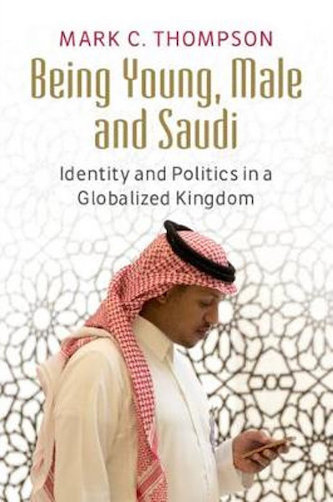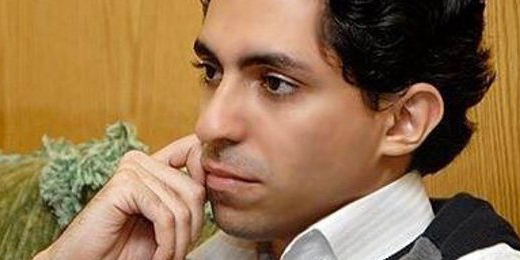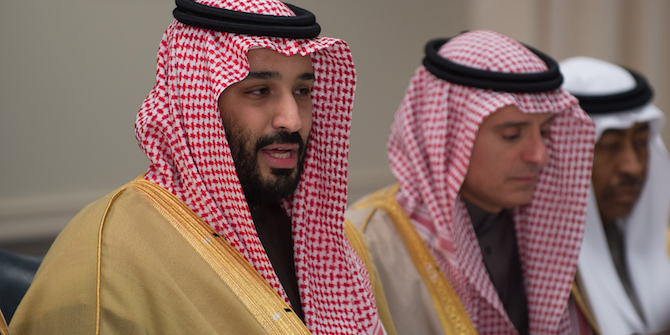by Madawi Al-Rasheed
In both academic literature and policy circles, Saudi youth are always mentioned as either a source of strength or strain on resources, services, employment and housing. Analysts frame the social, religious and political orientations of young people as problematic. Saudi Arabia’s demographic profile as a country of young men and women – approximately 47 percent are between 25–54 – is always problematised despite the fact that the country is one of the wealthiest in the world. Its current young Crown Prince Muhammad ibn Salman (better known as MbS) has pledged to empower the youth and precipitate a top-down social and economic revolution that would transform this young generation into moderate Muslims and modern entrepreneurs. Since he came to power in 2017, he has introduced several youth initiatives to promote entrepreneurial culture, creativity, tourism and artistic talents, thus injecting a certain vitality in an age group that had always been regarded with suspicion.
The involvement of young Saudis in radical religious projects at home and abroad since the 1980s has been well-documented in academic studies of terrorism, not to mention through the evidence of Salafi-Wahhabi-inspired social conservatism, gender inequality and the vigorous preaching of intolerance in the country. Other academic literature, for example Joyriding in Riyadh by Pascal Menoret, has focused on more nuanced social phenomena like the joyriding of the title, and the response of Saudi intellectuals to what is often described as the social deviance of youth subcultures. The activism and aspirations of young women in increasingly ultra-modern urban spaces is also documented with nuanced ethnographic analyses of their lives, resistance and sociability in the work of Amelie Le Renard. However, the limited literature on Saudi youth does not engage in the analysis of ambivalent identities, political controversies and new religious trends beyond radicalisation.
The two books under review tackle these issues in new ways. They both enhance our understanding of this large population and highlight new engagements with modernity and its tools, especially new communication technologies such as social media. Both books depart from the focus of earlier literature that was mainly preoccupied with terrorism, radicalisation and conservative religious observance.
Being Young, Male and Saudi explores young Saudi debates on identity and politics. As such it fills a vacuum in our understanding of complex questions about modernity and globalisation in Saudi Arabia. As for other youth cohorts, social problems including substance abuse and mental health concerns are prominent. But Mark Thompson moves beyond youth as a ‘problem’ to explore how new social transformations occur in the context of state initiatives that pledge to empower them. His starting point is the new projects of Prince MbS, especially those that target the young such as his Vision 2030 and Social Transformation Programmes. The ambivalence of national identity among young men and the issues of what makes one Saudi are the focus of substantial analysis. The author captures the concerns, worries and aspirations of a generation that is promised myriad services, including employment and housing, but is sometimes frustrated at how the future may not be so certain in a post-oil economy or with wealth that is entirely dependent on fluctuating oil revenues.
Using his position as lecturer in one of Saudi Arabia’s prestigious higher educational institutions, Thompson deploys the focus group research method to survey the opinions of a large cohort of young men in several Saudi cities. He engages with young men in conversations about identity or the alleged loss of it under the pressure of increasing globalisation. He maps reactions to the expectation and promise of employment, the recent social liberalisation of the public sphere, the rising perceptions of government accountability and transparency, and changing notions of masculinity, gender equality, marriage expectations and increasing divorce rates. He concludes his book with a detailed investigation of how Vision 2030 fares as a viable response to youth aspirations. At a time of falling oil revenues, Thompson analyses how its youth should be Saudi Arabia’s most important human capital.
Chapter two highlights young Saudis’ concern with employment, which stems from adherence to a ‘social contract’ between the governed and the governors. Saudis expect the government to provide jobs; in return they are willing to fulfil their civic duties. In this transactional arrangement, young Saudi men believe that the government is the equation’s net benefactor as the leadership does not provide sufficient life services (including education, health, and housing) proportionate to its income and wealth. Many surveyed young men anticipate that the arrangement will collapse if the government fails to provide sufficient employment opportunities, an important precondition for the materialisation of the Saudi nationalism that the crown prince promotes.
Moreover, the fact that around 70 percent of Saudis live in rented accommodation is also a contentious issue in a country with such substantial wealth. According to Thompson’s surveys, most Saudis yearn for home ownership but are unable to fulfil this dream because of high land prices and low wages. Compounded with the prospect of the government imposing new taxes on the population, Thompson argues that in recent years – and especially after oil prices plummeted in 2014 – the social contract between citizens and government has become strained.
In chapter five, Thompson explores young men’s perceptions of manliness (rujula), and masculinity (dhukura). It seems that young men make an apparent distinction between the two concepts but they still adhere to the interconnection between biological attributes and sociological meanings. For example, young Saudis consider facial hair to confer power, respect and gravitas as well as indicate piety (p. 197). He argues that ‘Saudi men are supposed to be virile, tough and courageous: they should not be feminine in either appearance or behaviour, because men should be able to start a family and provide “high values” for its members’ (ibid).
Worries about ‘the look, the talk, and the walk’ are real and most men aspire to marry and have a large number of children, thus adhering to traditional roles about the ‘patriarch’ who respects his mother, wife and daughters but sees himself as the ultimate protector of their honour. As more young men and women intermix in offices and workplaces, more marriages driven simply by love are likely. Young men are, however, aware of the limits that social-cultural norms impose on them, not all of which are rejected or wholeheartedly accepted by the young generation. The new social infitah (openness) that the crown prince has imposed since 2017, symbolised by the lifting of the ban on women driving, is also contested and debated among the youth. The real change documented by Thompson points to the speed by which women driving shifted from an ideological issue to simply a personal matter, debated from a new angle: the safety of women and the problem of harassment. Thompson’s book does not fully cover young men’s changing attitudes towards religion, although there are scattered references to new religious experiences and commitment among young people.
In Tweeted Heresies, Abdullah Hamidaddin, a naturalised Saudi from the deposed Yemeni Hamidaddin dynasty, explores new Saudi religious transformations in which he played a central role. His book is an updated version of his PhD thesis in which he analysed recent Saudi debates about atheism, agnosticism, humanism and doubt. In 2008, he started a small study circle, Harmonious Being, and invited a limited number of young men and women to discuss religious matters. He led the discussion for several years but the study meetings were disrupted and eventually ended by the Committee for the Promotion of Virtue and the Prohibition of Vice – the notorious religious police – in 2011. It was only in 2015 that the powers of this committee were curbed when King Salman came to power. However, after 2011, the study circle migrated to the virtual world and became a Twitter phenomenon. Hamidaddin’s book relies on his initial involvement in the group as leader and facilitator and, after the group was suspended, his research material relied on Twitter messages that the group and others posted to continue the conversation.
Hamidaddin shifts the focus from the oft-studied religious institutions of the state to individuals’ engagement with critical religious thinking, made possible with the advent of social media. He relies on sociological theories of modernity, secularisation, authenticity and disenchantment to explain the Twitter hashtags that criticise religion in a country that has banned and criminalised any vigorous discussion of religious observance, concepts and responsibilities. Among the revisionist discussions on religion, the book examines how young Saudis are fed up with a principle called sadd al tharai (literally ‘blocking the means’), where bans serve to pre-empt conditions that might facilitate sin. The ban on women driving was justified under this principle, whereby it supposedly served to mitigate against sin, despite the ban itself having no legitimacy from an orthodox Islamic point of view. What is often referred to as ‘Saudi religion’, the Wahhabi tradition, came to be a focus for critical discussion that reflected the frustration of the participants in the Harmonious Being study circle. However, the author points to the shallow religious knowledge of those who post critical hashtags. Simple and mundane questions, such as ‘why God created a universal religion (Islam) for all mankind that depends heavily on one language’ (pp. 95) are debated in the virtual world with a certain simplicity as participants express doubt and frustration with answers readily given by religious scholars holding traditional authority.
Hamidaddin explores the phases of takfir (excommunication) in Saudi Arabia and explains how both the religious scholars and the state have had different agendas in enforcing it, thus criminalising heresy. Their position led to vicious attacks upon, and even detention of, many young discussants in the group and beyond it such as the famous Raif Badawi, sentenced to 1000 lashes for his liberal views.
With the current Crown Prince’s new liberalisation policies, a question remains with regard to religious freedom in Saudi Arabia. It seems that the changes do not include ‘expanding freedoms of expression in public spaces’ (p. 190). The main source of information, Twitter, has lost its intellectual vigour, according to the author. The early discussions of religion and religious principles have all but disappeared. Twitter is currently dominated by populist propaganda that avoids controversial religious discussion. It is ironic that the new wave of repression under the Crown Prince silenced not only outspoken intellectuals, feminists and activists but also ordinary Saudis. As he consolidates his rule, controlling independent youth forums rather than empowering them has become an important strategy. This draws attention to the limitation of the internet virtual sphere under authoritarian rule.
The two books reviewed here offer us a glimpse of a changing society that is struggling to find a secure and independent sphere where freedom of expression and the safety of the participants in controversial debates are not compromised by the new wave of repression. The youth will continue to seek new spaces and free forums even if they are targeted by advanced spyware that seeks to capture transgressors and silence their voices. There will be a high price for critical thinking as criticising the religious and political status quo is seen to threaten the national unity of a country still struggling to define its national identity.
Both books understandably stay away from controversial political issues and discussions of these among the younger generation, although they both hint at youth frustration with the new social and economic programmes that target them. Their bottom-up approach is a welcome addition to the growing academic literature on Saudi Arabia, a country which can surely only flourish under less authoritarian rule.








